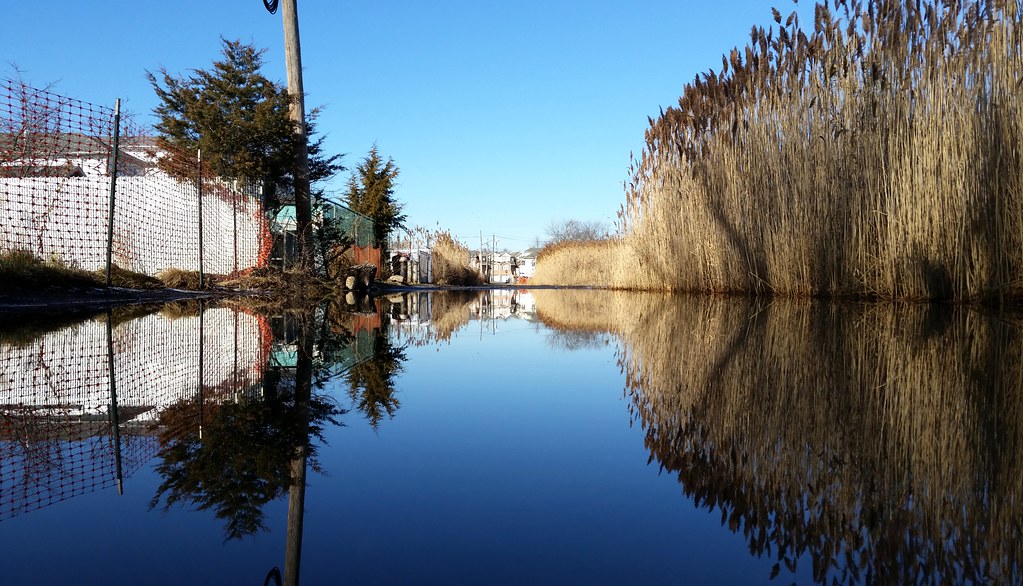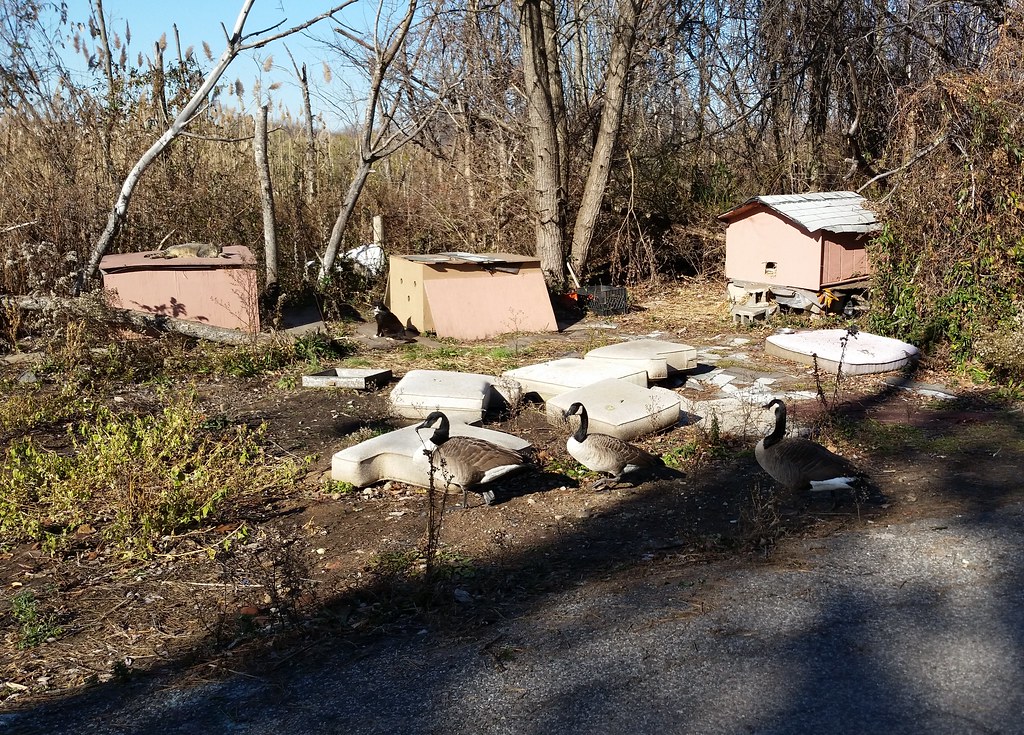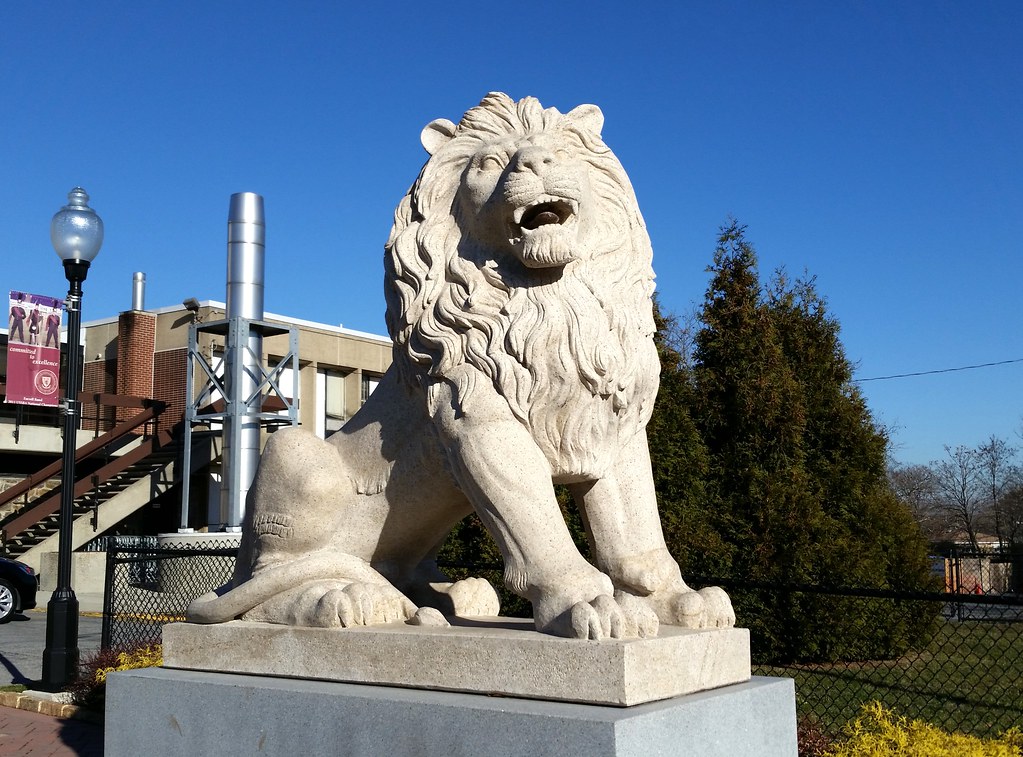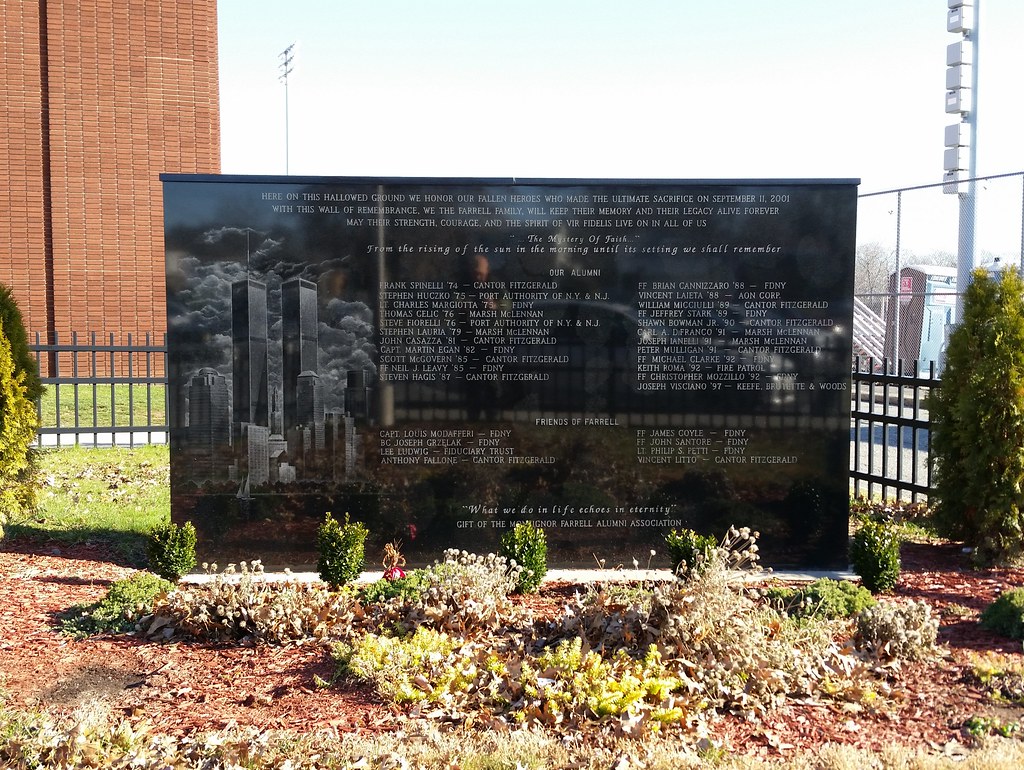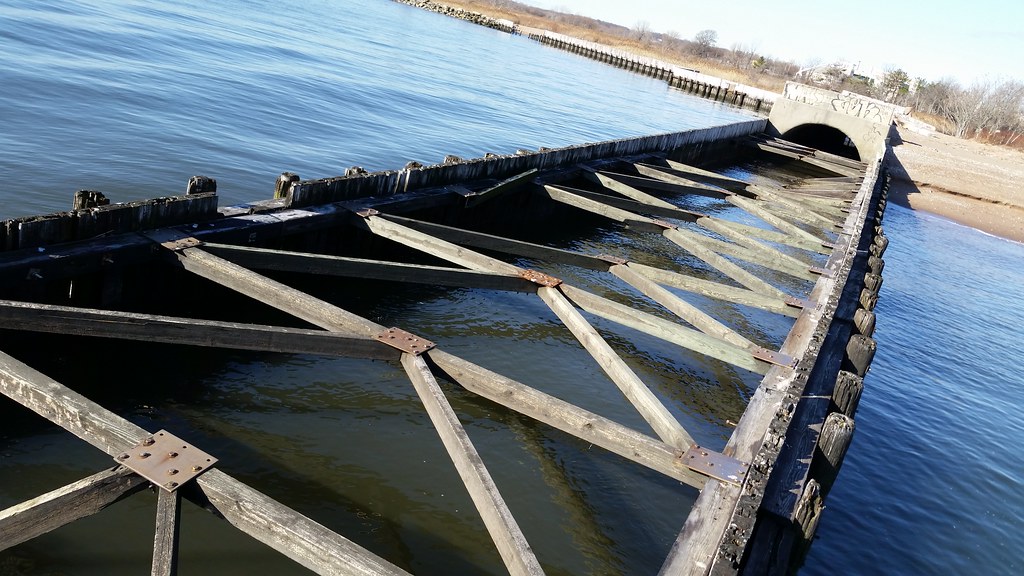
This walled channel at the mouth of Oakwood Creek, along with a tide gate and the wooden seawall visible in the background at left (bird's-eye view), once protected Oakwood Beach from seawater flooding. A 1992 nor'easter caused substantial damage to the already aging seawall, leaving the low-lying neighborhood vulnerable to flooding and leading the Army Corps of Engineers to construct the newer levee and tide gate we saw two posts ago.
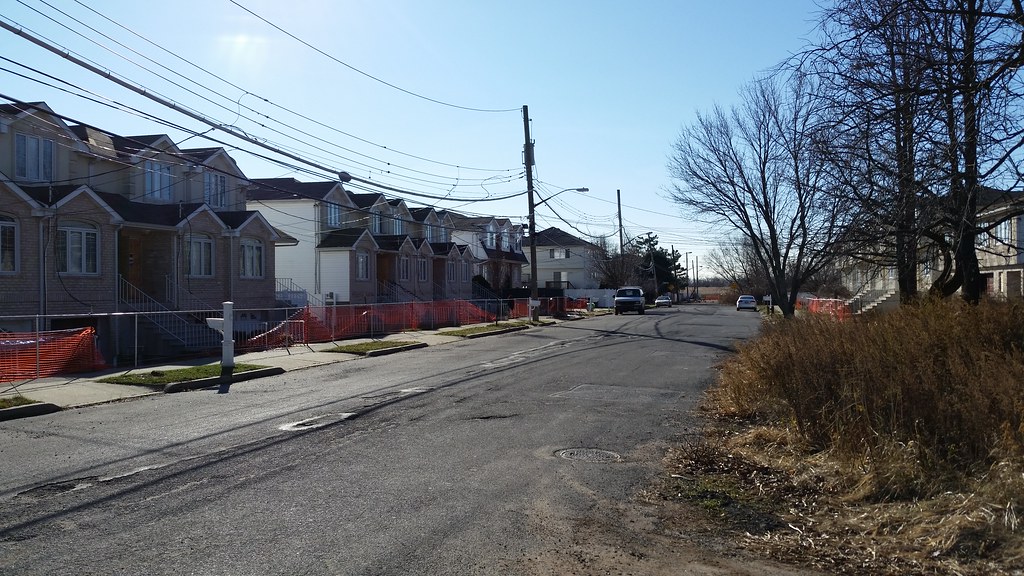
It seems like just about everyone in the Oakwood Beach buyout zone is taking the money and running. Rows of houses are boarded up and vacant, and the only people I saw who weren't in a car were loading up a moving truck.

over the Staten Island Railway at the Oakwood Heights station

This excellent work of art can be found atop a refrigerator case at Guyon Market. I asked the guy at the counter who painted it, and he pointed to the old-timer (let's call him OT) standing next to me. OT told me he didn't paint it, but he acquired it when a friend of his, who had found it in the garbage, had to get rid of it because his wife didn't like it. But then OT's wife made him get rid of it as well, because she was worried that their grandkids would be negatively influenced by seeing the monkey owner's middle finger. OT thought it was a great painting though, so he brought it here to the deli, where he seems to spend a good amount of time hanging out and socializing.

A sea of the pervasive, invasive reed (pronounced frag-MY-tees) at Great Kills Park in Gateway National Recreation Area
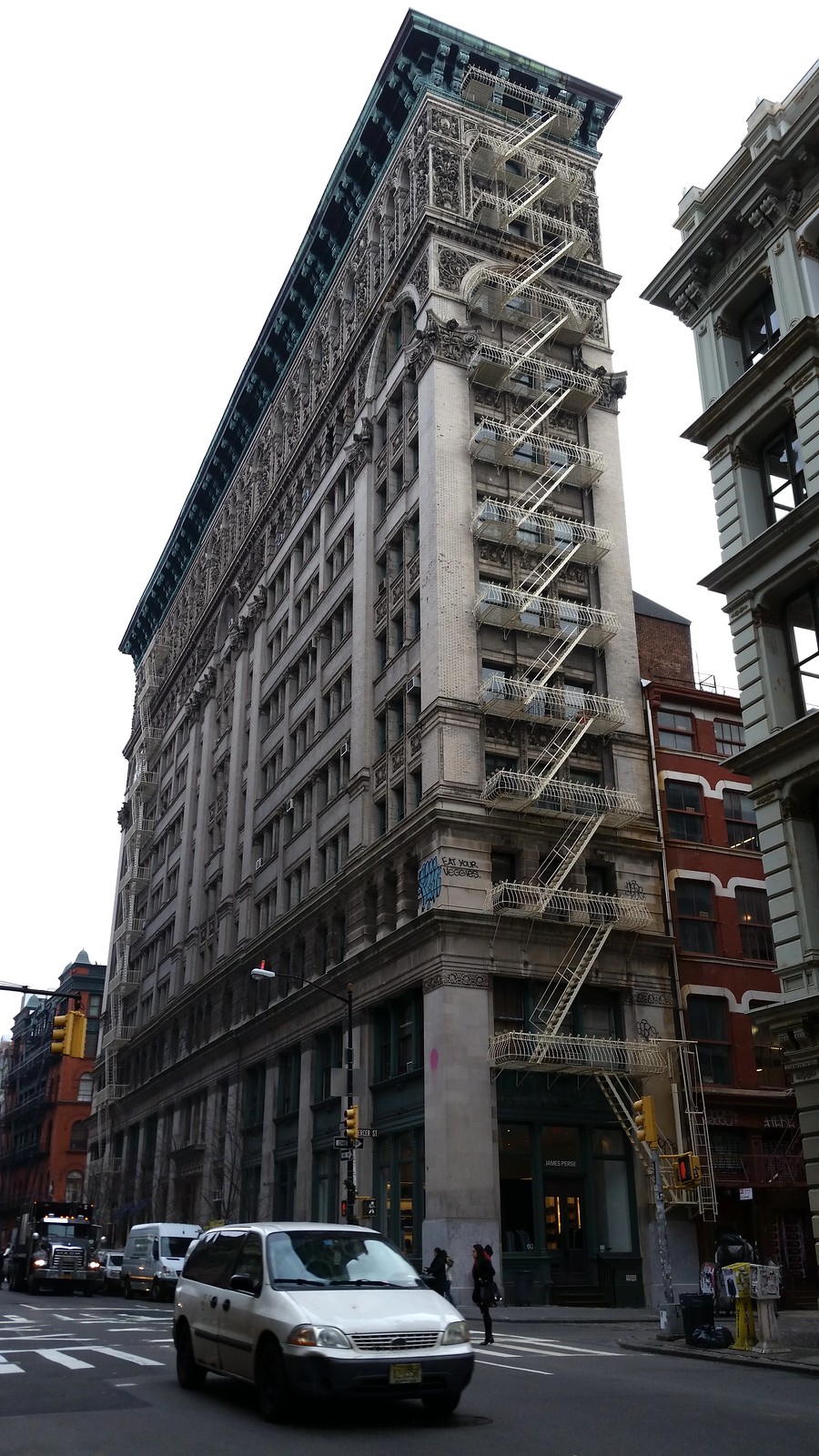
The Silk Exchange Buildling
(EAT YOUR VEGGIES.)

Built in 1856-57 for E. V. Haughwout & Company ("the greatest china and porcelain house in the city"), this "richly sculpted Venetian palace" is, according to the late critic Peter Blake, "the best cast-iron structure in the country". You can see some photos of the building's details here.
In April 1857, the store made history as the home of the first commercial passenger elevator. The original elevator is long gone, but a later one, installed in 1892 by the alphabetically consecutive and notoriously misogynistic A. B. See, was described by the NY Times's Christopher Gray in 1995 as "a beautiful work in its own right, with a paneled cab and elaborately cased shaft, no doubt one of the oldest operating elevators in the city — a ride in it is as memorable as one in a hansom cab." Sadly, that elevator apparently only survived for a few more years, until 2001 — just long enough for it to have seen parts of three different centuries.


